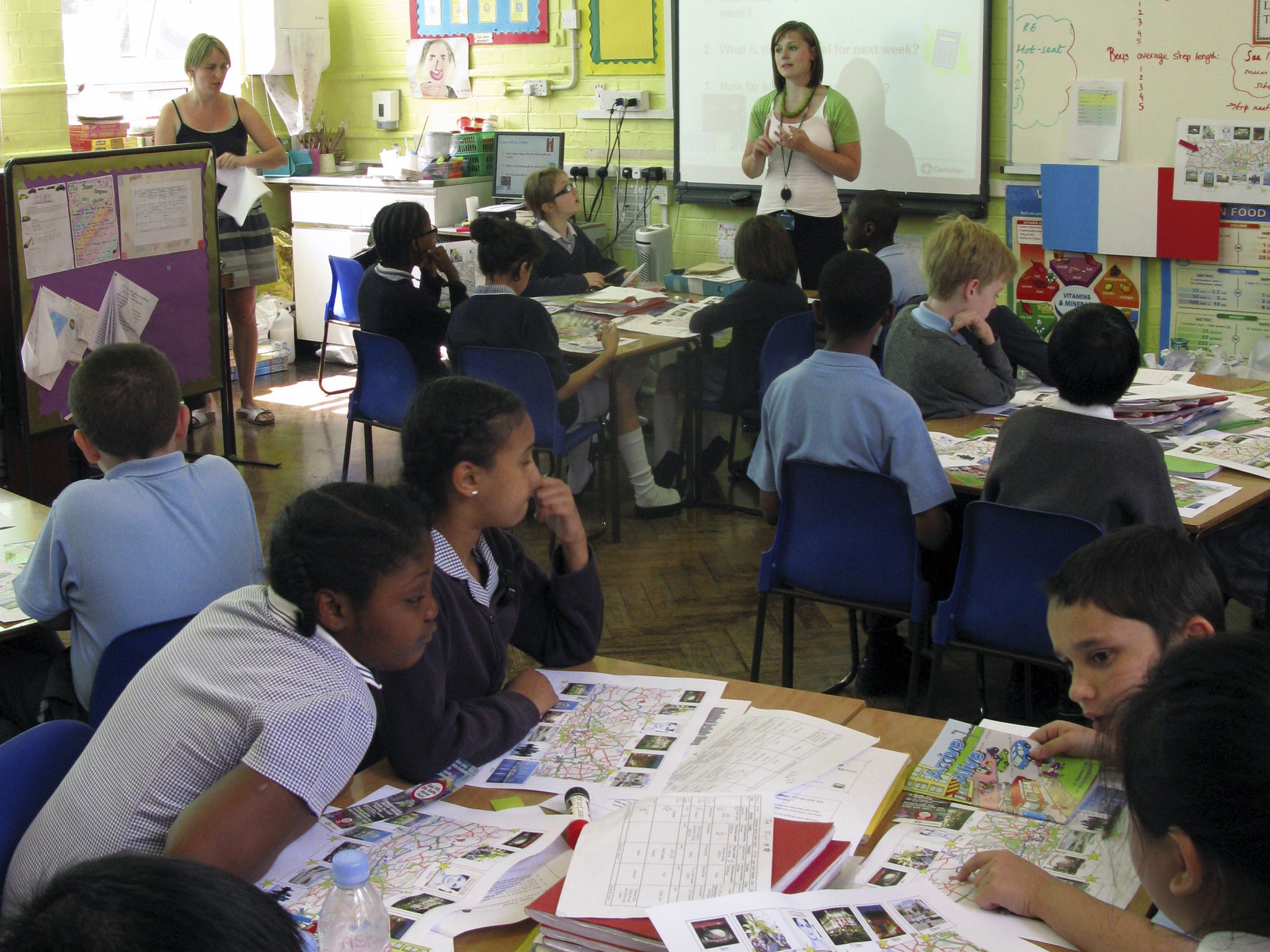Almost half of England's school districts will have more primary pupils than places in two years
Classes for five to seven-year-olds are being stretched beyond legal limit of 30

Your support helps us to tell the story
From reproductive rights to climate change to Big Tech, The Independent is on the ground when the story is developing. Whether it's investigating the financials of Elon Musk's pro-Trump PAC or producing our latest documentary, 'The A Word', which shines a light on the American women fighting for reproductive rights, we know how important it is to parse out the facts from the messaging.
At such a critical moment in US history, we need reporters on the ground. Your donation allows us to keep sending journalists to speak to both sides of the story.
The Independent is trusted by Americans across the entire political spectrum. And unlike many other quality news outlets, we choose not to lock Americans out of our reporting and analysis with paywalls. We believe quality journalism should be available to everyone, paid for by those who can afford it.
Your support makes all the difference.Schools have had to abandon playground space, libraries and music rooms to cram pupils in to classrooms to meet the demands of a bulge in the birth rate.
In addition, classes for five to seven-year-olds are being stretched beyond 30 - the legal limit introduced by Labour 16 years ago.
In one case, St John’s Church of England primary school in Bristol, 75 pupils in its reception class are now being taught in a disused and converted police station for their lessons.
The dramatic rise in demand for primary school places will continue to grow over the next few years until two-thirds of councils are expected to have more pupils than places by 2016, local government officials forecast.
Rising birth rates coupled with an uncertainty over funding have led to the crisis - with councils saying that a new “schools presumption” forbids any new schools opening unless they are flagship academies or free schools.
David Simmonds, chairman of the Local Government Association’s Children and Young People Board, said: “Mums and dads quite rightly expect their child to have access to a place in a good school, that is nearby, and in a good state of repair. But councils are facing unprecedented pressures in tackling the desperate shortage of school places.
“Councils across the country have been increasing places by expanding schools where possible through additional classes or new buildings.”
He added: “However, without enough resource to provide places we are seeing some schools having to take extreme measures including converting non-classroom space and reducing playground space, This seriously risks prioritising quantity of places at the expense of quality of education we are providing.
“The process of opening up much-needed schools is being impaired by a one-size-fits-all approach and in some cases by the presumption in favour of free schools and academies.
The crisis coincided with an unprecedented increase in the number of free schools - run by teachers, parents, faiths groups and private sponsors - with 93 opening this term. Labour claims many are in areas where there is no real shortage of places - or are secondary schools at a time when primary school places are at a premium. The figures show the problem is particularly acute in some parts of the country - for instance in Costessey, Norfolk, Purfleet in Thurrock and central Croydon there will be at least 75 per cent more pupils by 2015 than the number of places currently available.
Looking ahead to 2016/17, Central Bedfordshire, Croydon, Bedford, Waltham Forest, Newham and Hounslow councils are set to see the biggest demand for places with the need to increase school capacity by 25 per cent or more by the start of the 2016 school year.
Other councils such as Peterborough, Redbridge, Ealing, Bristol, Lewisham, Slough, Manchester, Barking and Dagenham and Sutton need to increase numbers by 20 per cent to ensure every child gets a place.
The LGA is urging Education Secretary Michael Gove’s department to put a ban on building any more free schools in areas with a surplus of school places to concentrate funding on the worst-hit councils.
Mr Gove said that the Coalition had “taken swift action to repair the damage” after Labour had ignored warnings of an impending crisis.
“We have more than doubled funding for new school places and we are also setting up great new free schools, which are giving parents a choice of high quality school places in areas Labour neglected,” he added.
Speaking on BBC 1’s Breakfast programme, he said the Government had spent £5 billion “a huge amount of money” - making up for what he termed “Labour’s shortfall”.
However, Stephen Twigg, Labour’s education spokesman, said: “Michael Gove has no business grandstanding his record: he and David Cameron cut schools capital spending by 60 per cent on taking office - twice as much as the cuts to other departments’ capital budgets.
“The Education Secretary has presided over a primary school places crisis while spending money on free schools in areas with surplus places. Pupils are packed into overcrowded classrooms on their first day at school and this out of touch Government offers nothing but complacency.”
Mary Bousted, general secretary of the Association of Teachers and Lecturers, added: “Michael Gove has promised swift action to tackle the shortage yet is determined to continue with his free school programme - opening expensive schools where no extra places are needed.”
Tonight Mr Gove accused Labour of slashing 200,000 primary school places whilst in power, adding they had been “warned repeatedly that they hadn’t done enough to plan for a growing population.”
“Labour cut 200,000 primary places, slashed the amount spent on areas of population growth and let immigration soar – and all this in the middle of a baby boom,” he added.
Join our commenting forum
Join thought-provoking conversations, follow other Independent readers and see their replies
Comments